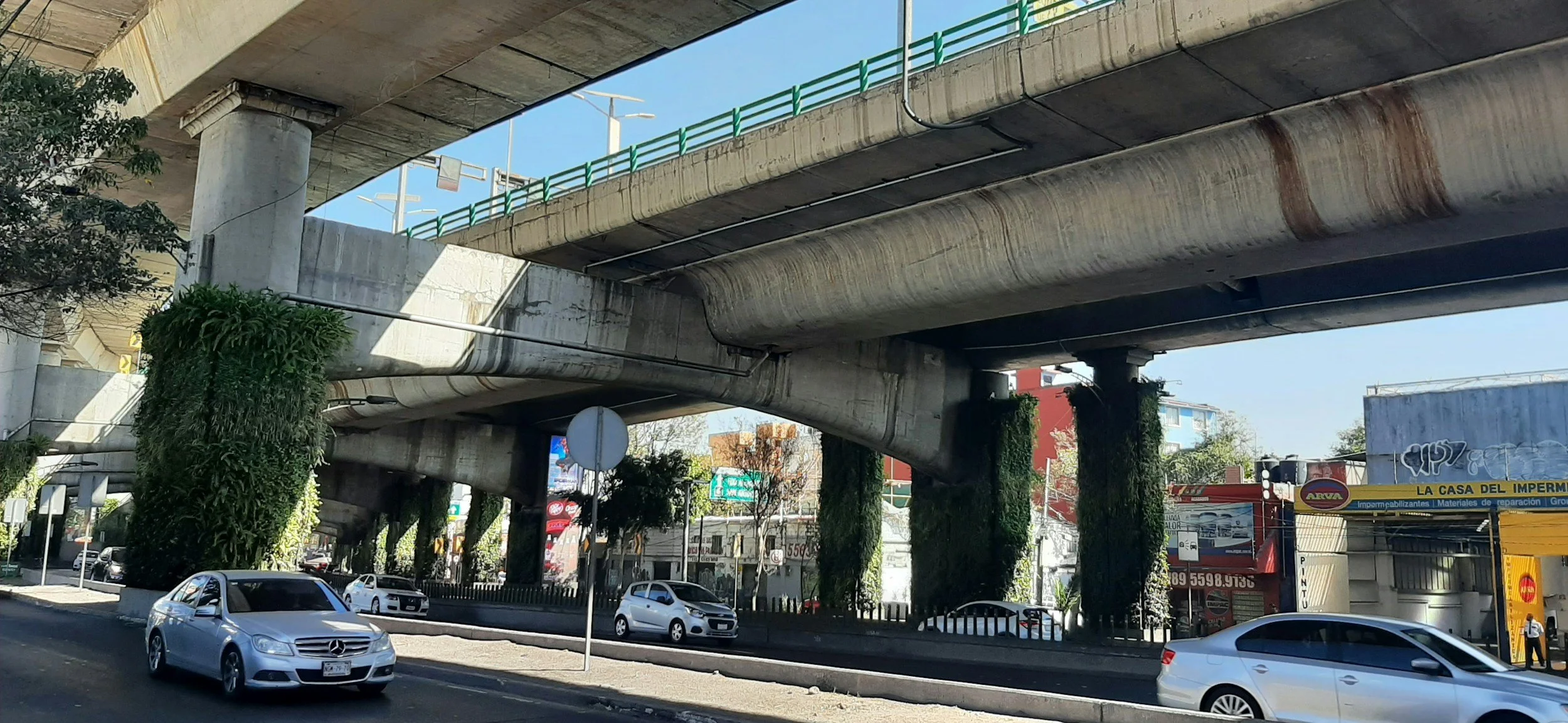Introduction
The "Doble Hoy No Circula" initiative has been an important measure to mitigate air quality within Mexico City's Comprehensive Program Against Atmospheric Pollution (PICCA). This measure was implemented as an urgent response to the growing air quality crisis. It current model began in 2014, aiming to restrict the use of private vehicles on specific days to reduce pollutant emissions and improve public health. In a megacity like Mexico City, where mobility and pollution are interconnected, policies like this affect not only the environment but also the health and well-being of its inhabitants.
What impact has the "Doble Hoy No Circula" program had on air quality and mobility in Mexico City? How could it evolve in the future to anticipate a more sustainable scenario?
Background
The "Doble Hoy No Circula" program in Mexico City was an extension of the original "Hoy No Circula" mobility measure, first introduced in 1989. The main goal of this measure was to reduce the number of vehicles on the streets of the megalopolis to lower critical levels of air pollution. Mexico City, one of the largest metropolises in the world, faces unique environmental challenges due to its population density, uncontrolled urban growth, and geographical conditions that trap atmospheric pollutants.
The initial measure, implemented in 1989, restricted the use of private vehicles one day a week, based on the last digit of the vehicle's license plate. Vehicles participating in this program are those without a “00” hologram (new vehicles or those less than 2 years old) or “0” hologram (vehicles with low emission standards). This program is activated depending on the pollution levels recorded in the city. Once activated, it increases the vehicle restriction from one to two days a week based on their hologram.
This emergent measure arose due to recurring environmental contingencies, where ozone and fine particle levels exceeded recommended limits, particularly affecting children, the elderly, and people with respiratory diseases. In addition to reducing vehicle emissions, the program aims to encourage greater use of public transportation and other sustainable transport methods. Improving air quality helps reduce the incidence of pollution-related diseases and enhances the quality of life for the most vulnerable populations.
From a humanitarian perspective, air quality has a direct impact on public health. Air pollution is linked to respiratory and cardiovascular diseases, which disproportionately affect the most vulnerable communities. Furthermore, reducing vehicular mobility during high pollution days can have positive secondary effects on community resilience and long-term sustainability. In the context of climate change, reducing CO2 emissions and other greenhouse gases is crucial to mitigating global warming and its humanitarian consequences.
Program Evaluation
The impact of the "Doble Hoy No Circula" measure over the past six years has been the subject of numerous studies and evaluations. Although it is difficult to attribute the positive impact on pollutant reduction solely to this measure, for nearly 20 years, Mexico City experienced a significant improvement in air quality, becoming an international benchmark and a city with a better quality of life (Arellano, 2019). However, in 2015, a slight increase in the concentrations of three key pollutants was observed: ozone and PM10 and PM2.5 particles (2019). This increase peaked in May 2019, causing an environmental crisis and raising public concern about the impact of pollution on health (2019). Part of the problem is estimated to be related to the contribution of other polluting sectors besides the private vehicle fleet, as well as the effects of climate change.
Graph 1. Trends in O3, PM10, and PM2.5 concentrations in the ZMVM
Recently, it is estimated that from January to August 2023, Mexico City only had 55 days (almost 23%) of good air quality, implying that for most of that year, more than 20 million inhabitants of Mexico City were exposed to pollutants such as carbon monoxide (CO), fine particles (PM2.5 and PM10), sulfur dioxide (SO2), nitrogen dioxide (NO2), and ozone (O3) (WRI, 2023).
While a government report (SEMARNAT, 2023) highlights that during the days when the program has been applied, the concentrations of these pollutants can be reduced by up to 20%, it is estimated that these benefits are often temporary and depend on the consistency in the application of policies and citizen collaboration.
In addition to quantitative data, testimonies and case studies have been collected showing the tangible effects of the program. For example, the reduction in traffic has improved mobility in certain areas and has encouraged the use of alternatives and comprehensive policies such as cycling and public transport. Mexico City is also one of the most forested at the national level. These changes not only contribute to better air quality but also promote healthier and more active lifestyles.
Not all the impact of the vehicle restriction program has been positive. For instance, negative effects have been reported, such as the purchase of additional vehicles by some residents to evade mobility restrictions when one of their vehicles is not allowed to circulate. This behavior indicates a lack of adherence to the spirit of the program and suggests that, without effective complementary measures and greater citizen awareness, the program's impact is limited.
In recent years, there has been a significant increase in vehicles at the national level. This indicates that more vehicles are circulating daily. Additionally, the vehicle possesion in Mexico is so culturally ingrained that it is possible some of these vehicles belong to the same person, a tactic used to evade the restrictions of the "Doble Hoy No Circula" program. Figure two shows the total increase in vehicles in the country (INEGI, 2024).
Figure 2: National total of vehicles
The program has also generated criticism due to its disproportionate impact on certain sectors of the population. Vehicle restrictions can negatively affect people who rely on their vehicles for work and do not have access to efficient and affordable transportation alternatives. This can create socioeconomic inequalities and exacerbate difficulties for those living in areas with less access to public transportation. It has also been observed that in some cases, the reduction in traffic on specific days has led to an increase in congestion and pollution levels on the days before and after the restrictions, thus minimizing the net benefits of the program.
Futures of Mobility
The "Doble Hoy No Circula" initiative opens the door to explore the futures of mobility in Mexico City in the long term, which requires considering various emerging policies and technologies that could amplify its positive or negative effects. Below are four possible scenarios for Mexico City, considering two variables of uncertainty: the effects of climate change and the degree of citizen participation.
High impact of climate change and high citizen participation: Eco-Tenochtitlán
In 2035, Mexico City faces a high impact of climate change, with extreme heat waves and frequent floods. However, high citizen participation has been crucial in addressing these challenges. Thanks to the active collaboration between civil society and the government, the "Doble Hoy No Circula" program has evolved to be more effective and flexible with a more comprehensive approach. Citizens have committed to reducing car use, utilizing sustainable alternatives such as bicycles and electric public transport (minibuses, trains, and trams). Although the effects of climate change are notable with high temperatures, incentives for using solar vehicles and creating more green areas have been implemented. This participation has not only reduced emissions but also created a culture of sustainability that improves quality of life and prepares the city for future climate challenges.
High climate change impact and low citizen participation: The Decline of the Great City
In an alternative scenario, in 2035, climate change severely affects Mexico City, and citizen participation is low. The "Doble Hoy No Circula" program faces difficulties due to citizen apathy and lack of cooperation. The construction of a Third Periférico Level, a third viaduct over the existing one, has become an incomplete project plagued by corruption and inefficiency. Many have opted to buy additional vehicles to evade restrictions, leading to increased emissions and traffic congestion. Government policies, although robust, do not achieve their maximum impact due to the lack of public support. The city suffers from high levels of pollution, extreme drought, increases in respiratory and cardiovascular diseases, and a limited capacity to address the effects of climate change.
Low climate change impact and low citizen participation: Stagnation
In this future, the impact of climate change on Mexico City is minor thanks to technological advancements and effective global environmental policies. However, low citizen participation limits local improvements. The "Doble Hoy No Circula" program remains in effect, but its effectiveness is null due to the lack of commitment from residents and the disproportionate increase in the vehicle fleet. Although technology has reduced emissions, the absence of a culture of participation and sustainability means that environmental policies must be constantly reinforced by the government, without achieving real support and commitment from the citizenry.
Low climate change impact and high citizen participation: Eco-Transformation
In an optimistic scenario for 2035, Mexico City experiences a low impact of climate change and high citizen participation. The "Doble Hoy No Circula" program has been successfully adapted and improved thanks to active citizen collaboration. The population has widely adopted electric vehicles and public transport, significantly reducing emissions. Additionally, community initiatives to create more green spaces and promote environmental education have been encouraged. The synergy between effective public policies and a committed citizenry has transformed the city into a model of urban sustainability. This has not only improved air quality but also strengthened social cohesion, making Mexico City a healthier and more resilient place.
Conclusion
Despite its limitations, the "Doble Hoy No Circula" program has proven to be a valuable tool in the fight against air pollution in Mexico City. Through vehicular restrictions, significant reductions in pollutant emissions have been achieved, improving air quality and, consequently, public health. However, to anticipate a truly sustainable and resilient future, it is necessary to complement this program with integrated policies, emerging technologies, and active citizen participation.
Mexico City has the opportunity to be a model for other megacities in terms of environmental policies and sustainable mobility. As we move towards the future, it is essential to continue innovating and adapting our strategies to face the environmental and humanitarian challenges that arise. With an anticipatory vision and collective commitment, we can build a cleaner, healthier, and more equitable city for all its inhabitants.
References:
Autofact. (n.d.). Doble No Circula: Todo lo que necesitas saber. Retrieved from https://www.autofact.com.mx/blog/mi-carro/emergencias/doble-no-circula
Forbes. (2019). Contaminación en ciudades causó más de 1.8 millones de muertes en 2019. Retrieved from https://www.forbes.com.mx/mundo-contaminacion-en-ciudades-causo-mas-de-1-8-millones-de-muertes-en-2019/
Instituto Nacional de Estadística y Geografía (INEGI). (2024). Total nacional de vehículos. Parque Vehicular. https://www.inegi.org.mx/temas/vehiculos/#informacion_general
World Resources Institute. (n.d.). Ahogan contaminantes 7 de cada 10 días del año la CDMX. Retrieved from https://es.wri.org/noticias/ahogan-contaminantes-7-de-cada-10-dias-del-ano-la-cdmx#:~:text=%2D%20De%20enero%20a%20agosto%20de
Secretaría del Medio Ambiente. (n.d.). Hoy No Circula. Retrieved from https://sedema.cdmx.gob.mx/programas/programa/hoy-no-circula
Secretaría de Medio Ambiente y Recursos Naturales. (2018). Registro Nacional de Emisiones Rene. gob.mx. https://www.gob.mx/semarnat/acciones-y-programas/registro-nacional-de-emisiones-rene
Secretaría del Medio Ambiente y Recursos Naturales. (2023). Informe Semanal Aire SEM30/2023. Retrieved from https://www.gob.mx/cms/uploads/attachment/file/848413/Informe_Semanal_Aire_SEM30_2023.pdf




